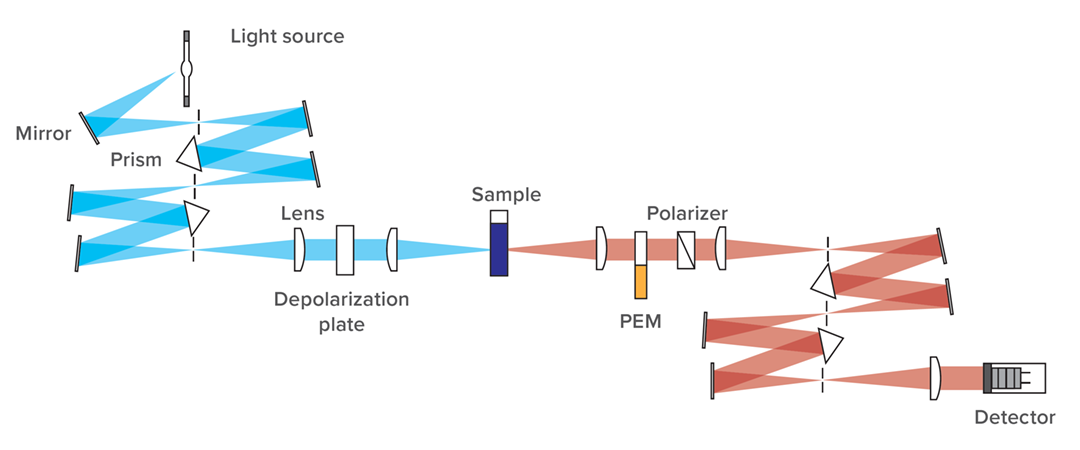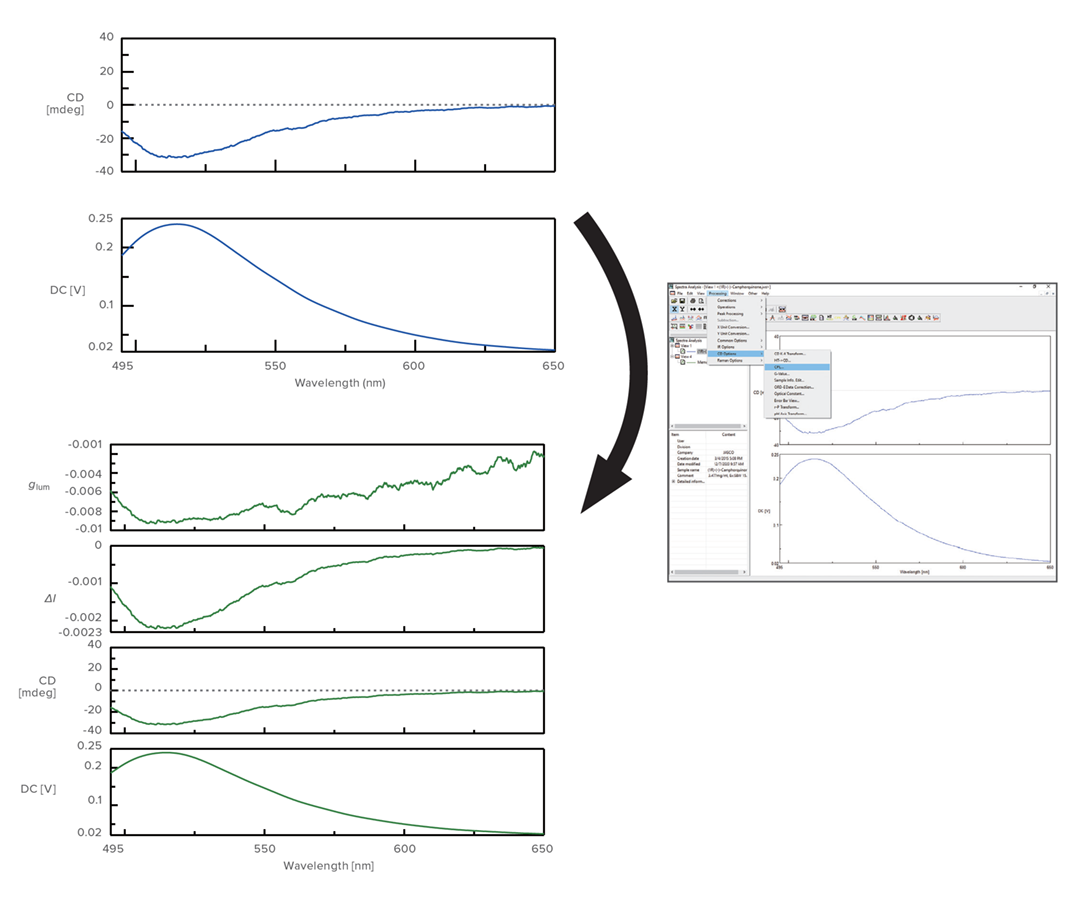High quality 180º optical system
A 180° optical system with unpolarized excitation light reduces artifacts generated by fluorescence anisotropy allowing the sample’s core properties to be determined.

Optical diagram of CPL-300
Double-prism monochromator
Many CPL signals are inherently weak. As such, it is imperative to employ a very low stray light optical system in order to resolve and detect a signal. The CPL-300’s optical system employs a double monochromator design with quartz prisms eliminating high-order radiation resulting in excellent detection of weak signals.
Circular polarization modulation and lock-in detection
The CPL-300 is based on a circular polarization modulation and lock-in amplification system which enables detection of extremely small intensity differences between left and right circularly polarized emitted light – often in the presence of signal noise.
Data collection and processing
The CPL-300 simultaneously collects two sets of data while keeping the photomultiplier tube at a constant gain.
• The CPL signal is measured as a demodulated AC component in millidegrees of elipticity
• The Fluorescence intensity (I) is measured as a DC signal in volts
Both data sets can be converted to the luminescence dissimetry factor (glum).

Data processing of CPL and Fluorescence spectra (Sample: (1R)-(-) Camphorquinone)
Top: Raw data, Bottom: Result of glum calculation (ΔI/I)
